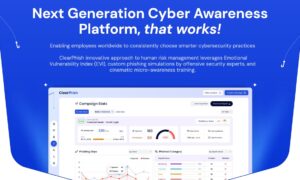Application security has emerged as the priority for any organization in today’s digital world, as cybersecurity threats are becoming increasingly sophisticated. With the increasing adoption of cloud computing, mobile applications, and IoT, the attack surface is much larger, and proper security measures need to be in place. Application security testing tools are one of the most critical aspects in finding vulnerabilities and ensuring applications are secure before their release.
In this blog, we look at one of the existing application security software and their potential to help you make your cybersecurity strategy stronger.
Understanding Application Security Testing Tools
Application security testing tools find vulnerabilities in software applications, thus mitigating them. Among the types of application security testing tools are:
- Static application security testing (SAST): These tools analyze either source code or binaries for vulnerabilities with no need to run the program. They are most commonly used in the beginning of the development lifecycle, where the caught issues are simpler and less cumbersome.
- DAST Tools: Dynamic application security testing. As against SAST, the DAST tool tests your applications running in their native environment. These tools simulating attacks point out vulnerabilities within your applications and possible exploitation means of maladjusted actors.
- IAST: IAST is like the combination tool for the elements of the above-described tools. Being real time feedback during execution, this monitoring of how applications behave and run under certain environments informs about present vulnerabilities in that application.
- Software Composition Analysis (SCA): SCA tools are used to identify vulnerabilities in third-party libraries and open-source components used within applications. Since open-source software is very common, these tools are critical to security.
Why Application Security Software is Important
Application security software is essential. Here are a few reasons why organizations should invest in these tools:
- Proactive Vulnerability Management: The discovery of vulnerabilities at the initial stages of development enables the organization to address the problem before it becomes a big issue, thus minimizing the risk of data breaches.
- Regulatory Compliance: Organizations in most industries are regulated by standards that mandate the presence of security measures within an organization. Application security testing tools assist organizations to be compliant with standards like GDPR, HIPAA, and PCI DSS.
- Cost-Effective Security: The vulnerabilities at the development phase are relatively cheaper to fix compared to at the deployment phase. Application security tools will assist organizations to save money in the long run.
Application Security Tool
HCL AppScan is a market leader in the application security testing tool with full web and mobile application solutions that help discover and mitigate vulnerabilities. The scanning capabilities of this application can identify a huge amount of security issues, including SQL injection, cross-site scripting (XSS), and insecure configurations.
One of the great aspects of HCL AppScan is its integration with DevOps pipeline. It actually allows organizations to introduce the security testing in the course of CI/CD cycles, thereby integrating security as part of the development cycle process.
It also provides for in-depth reporting and remediation guidance, enabling the development teams to work upon vulnerabilities effectively. With such an easy-to-use interface and robust capabilities, HCL AppScan is ideal for organizations looking to enhance the application security of their entities.
Conclusion
Application security testing tool investment, which used to be best practice, has become a necessity in this day and age where cyber threats are ever-evolving. Organizations should proactively implement security during the entire lifecycle of their software by employing tools like HCL AppScan, thereby finding vulnerabilities and then remediating them in place. By integrating these tools into a business’s processes, enterprises can enhance their security position, comply with regulations that are in place, and overall protect their sensitive data from breaching.
The rapidly changing digital landscape dictates the constant evolution of strategies through which applications can be protected. Appropriate application security software could ensure the necessary insights and capabilities to stay ahead of emerging threats, thus an indispensable component of any broad cyber security strategy. Organizations that prioritize application security, therefore, protect not just their assets but also help build trust with customers-a sure route to success in a highly competitive marketplace.


































